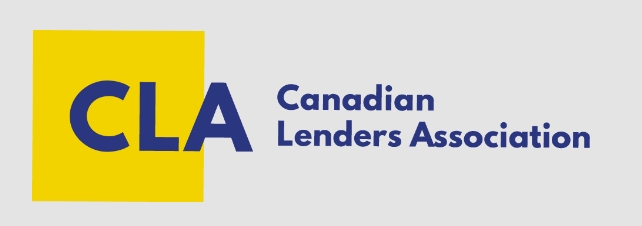My Personal Loan Was Declined: When Can I Apply Again?

Ask not just “when can I apply again?” when your personal loan is declined, but also “how should I prepare?”
How does that old saying go? If at first, you don’t succeed, apply and apply again? It turns out after your personal loan was declined, this old cliche isn’t necessarily the best one to apply - not for your credit score. At least not right away, anyway.
Applying for loans or a credit card isn’t like a moving target. You don’t want to keep firing away in the hopes of hitting it eventually. Applying for too many loans in a short time frame is going to knock your credit score down and make you look like a high-risk borrower. So, if your personal loan or credit card application was declined, here is the best strategy to get approved the next time.
Step 1. Find out why your loan application was denied.
This is best achieved by obtaining your credit report. You can do this for free, once per year from each credit bureau in Canada. Your credit report should make it pretty clear why you’re not getting approved for loans or other forms of credit. It could be a delinquent account listed on your report, or perhaps too many recent late payments on one of your other accounts. Perhaps you have something in collections that you weren’t aware of or maybe there is evidence of fraud on your report. Maybe you just have a low credit score. Whatever it is, you won’t find out unless you look at your report.
Here are some of the main reasons people get denied for loans:
- Poor credit: This seems like common sense, but you’d be amazed how many people have no idea they have poor credit. There are lots of people who have a tendency to avoid checking their credit, perhaps because deep down, some part of them knows they won’t like what they see. However, as a Canadian, you are entitled to a free credit report every year from each credit bureau in Canada and it is good, sound financial practice to take advantage of that. The first time you look, it may be worse than you thought, but seeing it right there in black ink is going to kick you into high gear to work towards bettering your credit.
- No credit: While it’s true you can get a credit card with no credit, as this is how many young adults begin their borrowing career, getting a loan is a whole different story. If you’ve never borrowed before, or haven’t in a long time, chances are you have no credit score. That’s because the credit bureaus have nothing to judge your credit habits by. Your best bet to fix this is to sign up for a credit card with your bank or start a credit building program, and start to build a credit score.
- Bankruptcy: The credit bureaus keeps a bankruptcy on your credit report for six to seven years. It’s right there for any lender to see when they assess your ability to repay any loans they give you. If you’ve declared bankruptcy within the last seven years, chances are, that’s why you’re being denied for a loan. The only way to deal with this is to wait it out.
- Consumer Proposal: Similar to bankruptcy, consumer proposals are kept on file for up to three years.
- Multiple derogs (late payments): A derog on your credit report is just jargon for late payment. Late payments can stay on your credit report for six years sometimes, which is why it is so important to make all your bills and credit payments on time. If you have multiple derogs on your credit report, you’re likely going to come up against some resistance when borrowing money.
- High DTI: Your DTI is your debt-to-income ratio. How much you make, versus how much you owe. To be considered a low risk for lending, your DTI should be around 43%. If your DTI is too high, potential lenders see that as a hazard sign; they can’t be sure you’re going to be able to make new payments for a new credit product on top of the ones you already have. There is only one way to lower your DTI and that is by paying down your debts or getting a huge boost in income.
- Your income is too low: Every lender needs to see that you have sufficient income, so they know you have the means to pay the borrowed funds back. What “sufficient” means may vary from lender to lender, so perhaps familiarize yourself with some whose threshold you meet.
- Applying for too many credit products in a short period of time: If a lender sees on your credit report that you’ve been applying everywhere for credit, it looks like you might be trying to get credit out of desperation. It makes lending to you riskier and leads potential lenders to think you may not be able to pay back the funds you borrow.
- There’s an error on your credit report: You might be surprised to find out just how common it is for Canadians to find errors in their credit report. These can include anything from a misunderstanding with a previous lender, to identity theft. Again, the best way to prevent this from happening, or fix it as soon as it does, is to stay on top of what your credit report says. The best way to fix these errors is by contacting the lender with whom there is an issue.
- You have payments in collections: Maybe you forgot to return your PVR when you canceled your cable account two years ago, or maybe you haven’t paid your Canadian Tire credit card in over a year. Whatever the reason is, when something you owe goes to collections, your chances of being approved for further credit are next to nil. If you feel something has been sent to collections in error, you absolutely must get that cleared up before you apply for a loan.
- You didn’t fill out the paperwork properly: This is a much easier fix than the rest of the reasons why you might get turned down for a loan. Just go over your application with a fine-toothed comb and you might spot an error.
- Your job is new: Lenders want to see a history of stable income, so that they feel confident that your current job isn’t going to end, abruptly limiting your ability to pay back what you borrowed. If you’ve just started a new job, this could be the reason you’re being turned down.
Step 2. Take the necessary steps to fix the issues you found on your credit report.
If there’s an error, be sure to contact the institution who made the error and have it fixed ASAP. Ensure you report any sign of identity theft or fraud to the police or lenders which it would affect. If you find out that maybe you don’t have enough credit, start building your credit profile up a little bit with secured credit products like a secured card or a credit builder loan. If the problem you’ve pinpointed is that your credit usage percentage is way too high, then work towards paying down your debt.
Step 3. Rebuild your credit.
Unfortunately, this task is much more complicated than just making your payments on time, although that’s a fantastic start. Many factors go into calculating your credit score. Try to lower your credit usage percentage to below 30% - that’s only 30% of all the credit you have used. You also want to ensure you make payments on time and in full every month. Paying your credit card bills with more than the minimum payment is going to get that credit score up even faster. The more money you put towards your credit card payments, the faster your credit score will rise. You can grab yourself a credit builder loan or a secured card in the meantime. Both a credit builder loan and a secured card are going to work to improve your credit score.
Step 4. Find the right loan provider for you.
Consider the terms of your loan as well as the interest rate. If you’re looking at getting a loan from an institution that boasts high approval rates no matter your credit score, be skeptical. Consider the ultimate cost of the loan - how much more than the principal will you have to pay in the long run and what are the monthly payments? Check consumer reviews if you do not already have a relationship with the financial institution you plan to tap for a loan.
Step 5. Apply again with confidence.
During all the previous steps, it could be beneficial to invest in a credit monitoring package from either Equifax or TransUnion so you can watch as your credit score rises. You’ll also know precisely when it’s time to go apply for your personal loan again and you’ll walk into the application process knowing exactly what your potential lender is going to see on your credit report. When you see you’ve earned yourself a great credit score, get out there and apply for that loan again.
Stay on the fast track to credit recovery.
These 5 steps will help increase your chances to get approval for the loan you’re looking for. To increase those chances, even more, make sure you’re diversifying your credit products - you want to have a mix of revolving (credit cards, lines of credit) and installment (loans, mortgages) credit. Grab a secured card or a credit builder loan if you want a low-risk credit product to boost your credit score.
****
Refresh Financial's credit builder loan can boost your credit score and put savings into your bank account!






I like what yous aid about getting an installment loan to help rebuild your credit with timely payments. My sister has been telling me about how she wants to get a larger loan in the coming years. I’ll share this information with her so that she can look into her options for installment loans that can help her with this.
https://moneywhenuneedit.com/texas-loan-offices